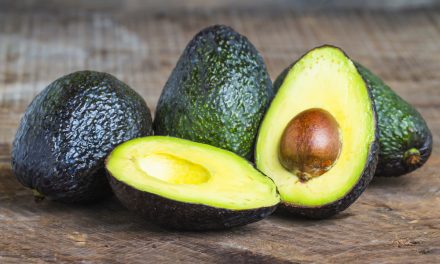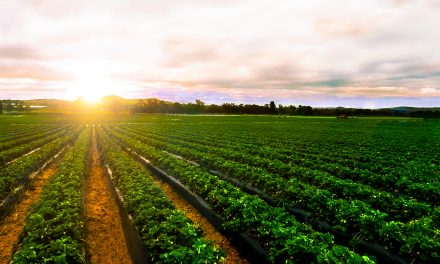UN leader warns of ‘catastrophe’ from global food shortage
CALIFORNIA — Farmers up and down California are once again facing an uncertain season ahead of them as a state water curtailment order issued in August 2021 continues to take its toll on farming and ranching families.
In July 2021, Gov. Gavin Newsom signed an executive order calling a drought emergency and asking for water conservation. Soon after, farmers and ranchers in California received curtailment orders from the California Water Board (CWB) to either immediately or prepare to suspend their senior water rights.
Water rights are a complicated and century-long system that farmers and ranchers are all too familiar with — because water is their lifeline.
A water right is a legal entitlement authorizing water to be diverted from a specified source and put to beneficial, nonwasteful use. Water rights are property rights, but their holders do not own the water itself. They possess the right to use it.
However, one cannot sell water rights without selling the land attached to it.
In June 2022, Newsom announced a $1.5 billion proposal to use taxpayer money to buy out farmers’ water senior rights to benefit endangered fish species in the state.
California Farm Water Coalition (CFWC) Executive Director Mike Wade, who is familiar with the proposal, expressed concern that buying the water right means farmers would have to sell the land attached to the water right. Selling their water right could mean a permanent end to the farms and ranches attached to it.
There are several different forms or levels of water rights one can possess. Senior water rights holders are those who established the water claim before 1914, when California created its formal water rights system.
There are also appropriative and riparian water rights. Riparian rights refer to the use of naturally flowing water such as land touching a lake, river, or stream. An appropriative right exists regardless of the land’s relationship to the water. An appropriative right is generally based upon physical control and beneficial use of the water.
The emergency curtailment orders issued on Aug. 3, 2021, by CWB required farmers in the Sacramento and San Joaquin river watersheds to immediately stop diverting water from waters and streams because the drought is rapidly depleting the California reservoirs and killing endangered species of fish.
The curtailment orders are resulting in a significant economic impact with the loss of jobs and food, putting many in fear of an impending food shortage.
According to data CFWC collected based on current drought conditions, water district’s supply availability, and curtailment orders, the state is facing up to an estimated 691,000 acres of fallowed farm ground compared to 395,100 acres in 2021.
The loss of farm grounds results in an estimated loss of nearly 25,000 jobs compared to just over 14,000 jobs lost in 2021. And that ends up leading to an estimated loss of nearly $3.5 billion from the economy.
“It’s kind of a domino effect that ends up hurting rural communities,” says Wade.
This year is looking no different for California farmers when it comes to water and food security. The drought still exists, and there are the added hindrances from the events in Ukraine — the world’s bread basket, iron, steel, and fertilizer supplier. And don’t forget inflation and the rise in gas prices.
The idea of a food shortage is constantly on the minds of even world leaders, including U.N. Secretary-General António Guterres, who warned on Friday of a “catastrophe” from a global food shortage.
“When we see things happening in eastern Europe with Ukraine and Russia and the pressure that it is putting on the global food supply, is it a good idea to be doing things in California to take land out of production?” asked Wade.
Back in August 2021, farmers with riparian water rights in areas like Scott’s Valley near the Oregon border were asked to sign an agreement from CWB agreeing to cease pulling water when they deemed it appropriate to.
Those who did not sign the contract are now receiving notices stating if they do not sign the agreement, the water right holder will face a “potential fine up to $500 per day per water right for each day the certification(s) is/are not filed.”
Essentially, farmers and ranchers relying on the water for their crops are being left with two options:
- Sign the agreement and wait for their water rights to be suspended, potential in the middle of farming seasons.
- Pay $500 per day of diverting water essential to grow their crops and keep their farms and families alive.
Neither option seems very bulletproof for the farmer.
“From our organization’s perspective, we don’t like to see farmland taken out of production when it’s taking water from a community that is dependent on agriculture,” explained Wade.
In a February 2022 article in AgAlert, farmers and ranchers living in the Scotts Valley shared their worries about what the curtailment order could bring in its second season. Some were already considering selling out.
“There’s a lot more thought among some landowners of getting out while the getting is good if this is the way it’s going to be,” said Siskiyou County cattle rancher and hay grower Rick Barnes of Callahan, who relies on Scott River water. “Selling the ranch has been a topic. It’s a thought of mine. I know there’s a lot of first, second, and third-generation people who are thinking maybe it’s time to head for the exits.”
In June, Scott Valley water rights holders received orders under their curtailment order that required them to cease pulling water from the Scott River and underground wells.
According to the CFWC, “The water in the Scott River and underground wells is the sole supply for these farmers on their 30,000 acres of irrigated land, located within a 512,000-acre watershed. This mountain valley primarily produces alfalfa and grass hay, pasture, grain, and cattle. Besides two organic dairies, beef production is either organic or conventional pasture-based for popular markets.”
According to CWB, 12,600 out of 16,700 curtailment compliant certifications have been filed. Of those, 795 water rights/claims have filed for health and safety exceptions, and 805 have filed for non-consumption use exceptions. Fifteen have submitted a petition for reconsideration, and 16 submitted proposals saying the curtailment has been inappropriate since August of last year.
All petitions for reconsideration have been denied by the CWB. Only one proposal saying the curtailment is inappropriate has been approved. The rest are pending.
“The drought is showing how unprepared we are with our water supply system,” says Wade, who implores that improving the state’s water storage and infrastructure is the only way to avoid losing more farms in the future.
Wade tells Paso Robles Press of orchards using the water they have now to pull out plots of trees. They do this now, because the high probability of their water being restricted later in the season will make for a less than profitable harvest.
“The state and the federal government have to step up and invest in our water supply system,” said Wade. “And some things are happening, we aren’t saying nothing is happening, but we have to do some big things to stabilize California, our agriculture industry, and our ability to grow food for people because this isn’t a farm issue or a farmer issue or a rural community issue. It’s an issue for American consumers.”
Regardless of politics, the end result is the same — no water, no farms, no food.
RESOURCES
latimes.com/world-nation/story/2022-06-24/un-chief-warns-of-catastrophe-from-global-food-shortage
farmwater.org/farm-water-news/11504/
waterboards.ca.gov/drought/scott_shasta_rivers/docs/2022/scott-addendum31.pdf
pasoroblespress.com/news/the-western-drought-and-the-food-supply/
waterboards.ca.gov/drought/delta/curtailment-compliance-and-responses.html
















